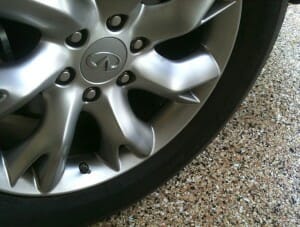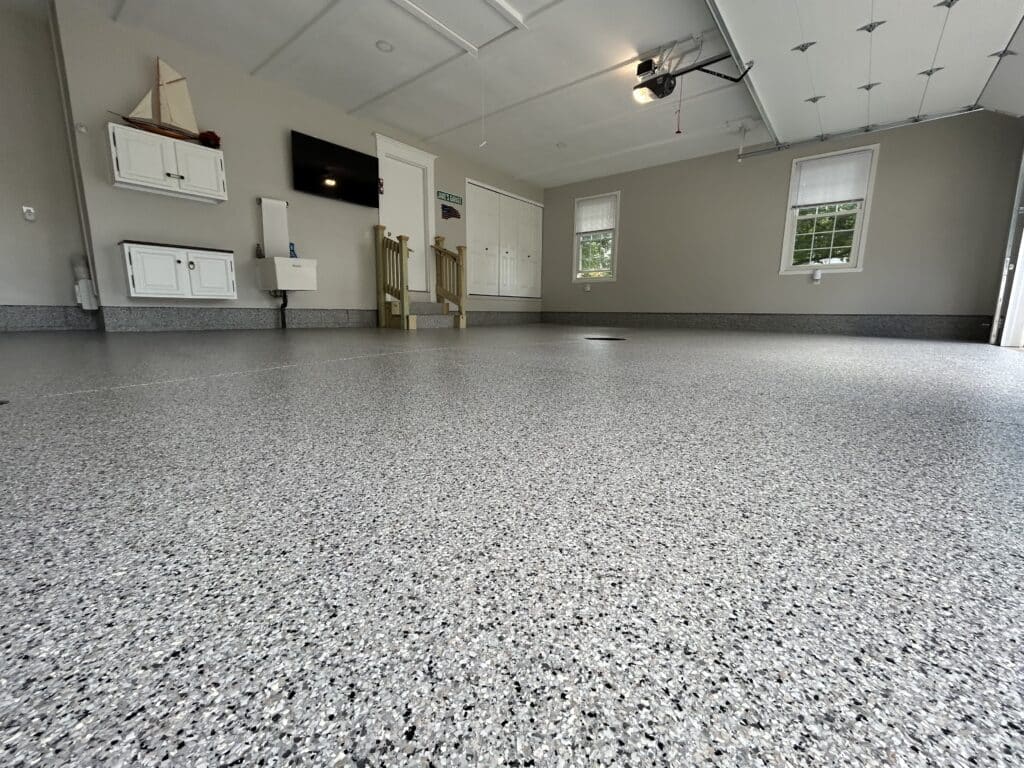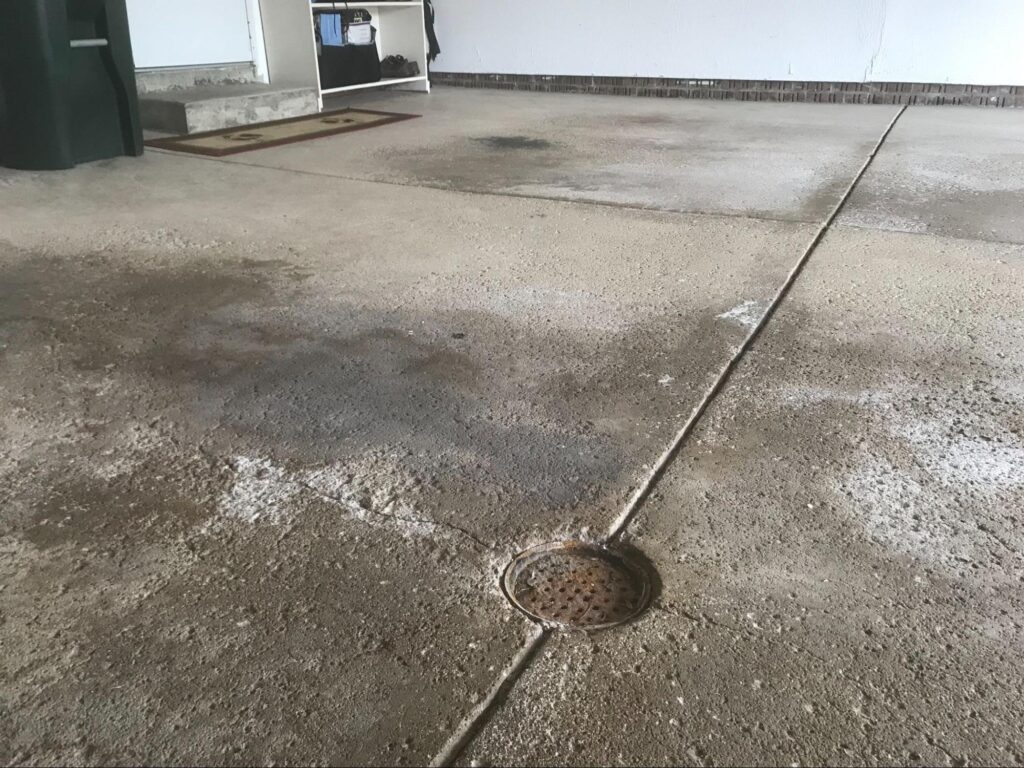Epoxy or Polyasartic Basecoat: Which is Better for Your Garage?
At Ohio Garage Interiors we use a combination of a high-grade tinted epoxy base coats with a clear polyaspartic topcoat. On the first day the concrete is prepped with a dustless mechanical grinding process. The floor is then coated with an epoxy into which vinyl flakes are broadcast. The following day the floor is scraped and cleaned for a smooth textured profile. A polyaspartic clear topcoat is then applied and the floor typically cures by the next morning. This two-day process is generally accepted in the industry as the superior application process.
 We recently had a customer trying to decide between our company and a competitor. Our competitor was offering a one-day garage floor coating application using polyaspartic materials for both the basecoat and topcoat. At first thought a one-day install sounds enticing but is it really what is best for the quality and longevity of your garage floor coating? Let’s take a look. Polyaspartic materials are fast curing and UV Stable. This is most beneficial when used as the clear topcoat in a garage floor coating system because it means there will be no effect from prolonged exposure to sunlight and typically allows the floor to back in use in 24-36 hours. When it comes to the basecoat component of the system (the material layer applied directly to the concrete after prep) we believe that an epoxy is the ideal choice. We recommend only high-grade epoxies be used as a basecoat and this is based on years of experience and recommendations among major coating suppliers. The reason is simple, since epoxies cure much slower than polyaspartics, they can penetrate much deeper into the pours of the concrete before curing and this creates a much stronger adhesion. This process allows us to complete a floor coating system as a two-day installation.
We recently had a customer trying to decide between our company and a competitor. Our competitor was offering a one-day garage floor coating application using polyaspartic materials for both the basecoat and topcoat. At first thought a one-day install sounds enticing but is it really what is best for the quality and longevity of your garage floor coating? Let’s take a look. Polyaspartic materials are fast curing and UV Stable. This is most beneficial when used as the clear topcoat in a garage floor coating system because it means there will be no effect from prolonged exposure to sunlight and typically allows the floor to back in use in 24-36 hours. When it comes to the basecoat component of the system (the material layer applied directly to the concrete after prep) we believe that an epoxy is the ideal choice. We recommend only high-grade epoxies be used as a basecoat and this is based on years of experience and recommendations among major coating suppliers. The reason is simple, since epoxies cure much slower than polyaspartics, they can penetrate much deeper into the pours of the concrete before curing and this creates a much stronger adhesion. This process allows us to complete a floor coating system as a two-day installation.
Be cautious of contractors using polyaspartics to achieve a one-day installation. Because the materials cure so quickly it allows them to complete a floor in just one day. That’s right, just one trip out – imagine how much more profitable it makes them to spend only one day at your home. It all sounds great until floor starts having issues a few years later. Polyaspartics simply do not bond as well with concrete than epoxy.
Another drawback of some polyaspartics is that they can be 25% less solid than comparable higher-grade epoxies and polyaspartics. This means they contain solvents that evaporate out as the material cures. This means that when the floor dries it will be 25% thinner and has a strong solvent smell as it cures. This can affect the longevity of the flooring system. At Ohio Garage Interiors we only use 100% solid epoxy and polyaspartic materials that contain no solvents and are VOC free. In the end, our advice is to stick with the process and materials that have been proven over years in the residential garage flooring industry.


